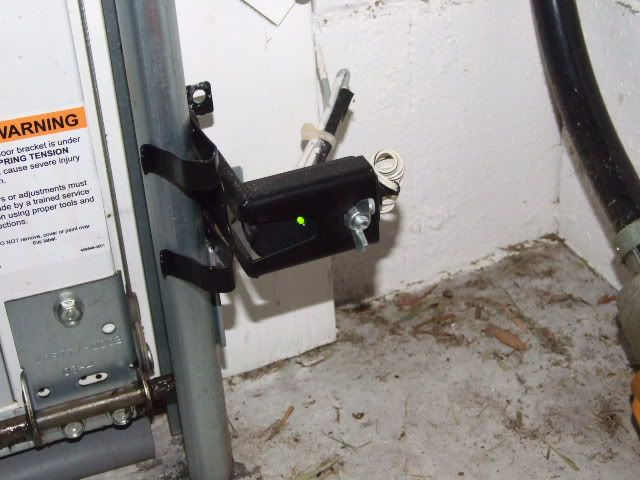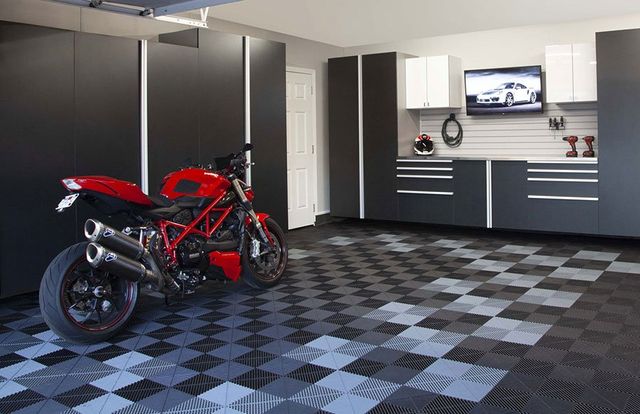
A garage can make it difficult to live. You are not guaranteed safety and you run the risk of being harmed by living in a garage. Pests are one the most serious risks. Pests are attracted to garages for several reasons. They are dark, secluded and shaded, making them attractive to rodents and insects. It is also easy to access garages. This makes it easy for them to enter and exit the building quickly.
Some of these animals can be dangerous to you and your pets. Muskrats, for example can be aggressive and cause water seepage issues. If you can't get rid of them, they could damage your vegetation or spread rabies. Keep dangerous chemicals out your garage.
An additional risk is a garage that is not well insulated. If the temperature drops, it could be a problem. This is when you need to keep the floors warm. The best solution is to install garage heating systems. Another option is to create an additional floor.
For many reasons, people prefer to live in garages. It is often because it is convenient. Many garages are easily accessible so that people can move in or out as they please. It is also a great storage space.

While garages offer a welcome refuge from the elements it is not without danger. You will need a permit to build an apartment in the garage. You may also need to comply with zoning laws, which can make it difficult to convert.
There will be restrictions in your community regarding the type of living space that you can create. To convert a garage into living space, contact your local alderman.
Your agent will also be needed before making major home improvements. It is important to pay attention to your taxes and adjust your insurance premiums. Major changes can impact your risk profile making your house more costly to insure. A bedroom addition can reduce the house's resale worth.
Although garages are great shelter from the rain, they can also be breeding grounds for pests. You might have spiders, raccoons or rats depending on where you live.
If you do decide to convert your garage into a living space, make sure that your neighborhood is not infested. If you suspect there may be a problem with a neighbor’s garage, it is best to file a complaint with your local housing authority. Your name will be added to the complaint form.

It has been reported that people sleep in cars while using kerosene heaters to heat their homes. Be careful with these appliances. Also, your vehicle may be at risk of being broken into.
Safety is the most important thing to consider. Make sure your kids aren't exposed to toxic chemicals. Additionally, they should be kept away from wires and other items.
FAQ
What is the difference between renovation and remodel?
A remodel is a major change to a room or part of a room. A renovation is a minor change to a room or a part of a room. For example, a bathroom remodel is a major project, while adding a sink faucet is a minor project.
Remodeling involves the complete or partial renovation of a room. A renovation is simply a change to a specific part of a space. For example, a kitchen remodel involves replacing counters, sinks, appliances, lighting, paint colors, and other accessories. But a kitchen update could include painting the wall color or installing a new light fixture.
What should I do with my current cabinets?
It depends on whether you're considering selling your home or renting it out. If you are planning on selling, you might want to take out and refinish the cabinets. This gives buyers an impression of brand new cabinets, and it helps them imagine their kitchens after they move in.
You should not put the cabinets in your rental house. Many tenants complain about cleaning up after their previous tenants, including greasy fingerprints and dirty dishes.
The cabinets can be painted to look fresher. Use a high-quality primer. Low-quality primers and paints can crack easily.
What are the biggest expenses in remodeling a kitchen?
There are a few important costs to consider when renovating a kitchen. These include demolition, design fees, permits, materials, contractors, etc. Although these costs may seem relatively small, if you take them all together, they can quickly add up. These costs quickly multiply when they are added up.
Demolition is the most costly cost. This includes removing the old cabinets, appliances, countertops, flooring, etc. Next, you will need to remove insulation and drywall. Finally, replace the items.
You will need to hire an architect for plans. To ensure that the project meets all building codes, permits must be obtained. The next step is to find someone who will actually do the construction.
The contractor must be paid once the job has been completed. All told, you could spend anywhere between $20,000 and $50,000 depending on how big the job is. You should get estimates from multiple contractors before you hire one.
These costs can be avoided if you plan. You might get better deals on materials and even save some time. You will be able save time and money if you understand what needs to done.
Many people install their cabinets by themselves. They think this will save money because they don't have to pay for professional installation services. Problem is, they often spend more time trying to place the cabinets themselves. Professionals can typically complete a job in half the time it would take you.
You can save money by buying unfinished materials. Before purchasing pre-finished materials like cabinets, you must wait until all the pieces are assembled. By buying unfinished materials, you can start using them right away. You can always make a change if things don't go as you planned.
Sometimes, though, it doesn't make sense to go through all of this. Remember: the best way to save money on any home improvement project is to plan.
How much would it be to renovate a house vs. what it would cost you to build one from scratch?
A home's contents are removed, such as walls, floors, ceilings and plumbing. It is often done when you are moving to a new location and wish to make some improvements before you move in. The cost of gutting a home can be quite expensive due to the complexity involved. Your job may require you to spend anywhere from $10,000 to $20,000 to gut your home.
Building a home is where a builder builds a house frame by frame, then adds walls, flooring, roofing, windows, doors, cabinets, countertops, bathrooms, etc. This is often done after purchasing lots of land. Building a home is normally much less expensive than gutting, costing around $15,000-$30,000.
It really depends on your plans for the space. You will probably have to spend more to gut a house. However, if you want to build a home, you won't have to worry about ripping everything apart and redoing everything. Instead of waiting for someone to tear it down, you can make it exactly how you want.
How can you tell if your house needs renovations or a remodel?
First, consider whether your home has been updated in recent times. It may be time for a renovation if your home hasn't been updated in a while. However, a remodel might be the best option for you if your home seems brand-new.
A second thing to check is the condition of your house. A renovation is recommended if you find holes in your drywall, peeling wallpaper, or cracked tiles. A remodel is not necessary if your home appears to be in great condition.
Another factor to consider is the general state of your home. Is it structurally sound? Do the rooms look nice? Are the floors clean? These are crucial questions when deciding on the type of renovation to do.
What are the included features in a full remodel of your kitchen?
A complete kitchen renovation involves more than simply replacing the sink and faucet. There are cabinets, countertops as well, lighting fixtures and flooring.
Full kitchen remodels allow homeowners to modernize their kitchens without the need for major construction. This means there is no need to tear down the kitchen, making the project more manageable for both the homeowner as well as the contractor.
A kitchen renovation can include a variety of services such as plumbing, HVAC, painting, drywall installation, and electrical. Depending on how extensive your kitchen renovation is, you may need multiple contractors.
It is best to work with professionals who have experience in kitchen remodeling. Small issues can lead to delays when there are many moving parts involved in a kitchen remodel. If you choose a DIY approach, make sure you plan and have a backup plan in place in case things go wrong.
Statistics
- Attic or basement 10 – 15% (rocketmortgage.com)
- Windows 3 – 4% Patio or backyard 2 – 5% (rocketmortgage.com)
- 57%Low-end average cost: $26,214Additional home value: $18,927Return on investment: (rocketmortgage.com)
- bathroom5%Siding3 – 5%Windows3 – 4%Patio or backyard2 – (rocketmortgage.com)
- $320,976Additional home value: $152,996Return on investment: 48%Mid-range average cost: $156,741Additional home value: $85,672Return on investment: (rocketmortgage.com)
External Links
How To
How to Remove Tile Grout From Floor Tiles
Most people are unaware of tile grouting. It is used in sealing joints between tiles. There are many types of grout available today. Each one has a different purpose. Here we will show you how to remove tile grout from floor tiles.
-
Before you begin, make sure you have everything you need. A grout cutter, grout scraper and some rags are all essential.
-
Now you need to start cleaning off any dirt or debris stuck under the tile. To remove grout, use the grout cutter and gently scrape any pieces. You should not damage any tiles.
-
After cleaning up all the grout, you can use the grout scraper to remove any remaining grout. If there isn't any grout left, you can go to step 4.
-
You can now move on to the next stage after you have completed all your cleaning. One of the rags can be used to soak in water. You want to make sure that the rag gets completely wet. When the rag has become soaked, wring it out, so that excess water stays inside the rag.
-
The wet rag should be placed on the joint between the tile and the wall. Press firmly on the rag until the grout begins to break apart. Slowly pull down on the rag until it is pulled towards you. Continue pulling it backwards and forwards until all the grout has been removed.
-
Repeat steps 4 to 5 until grout is gone. Rinse the ragout. Repeat the process if necessary.
-
Once you have finished removing all the grout, wipe down the surface of the tiles with a damp cloth. Allow to dry completely.